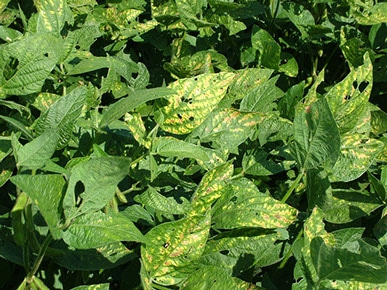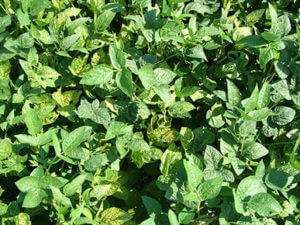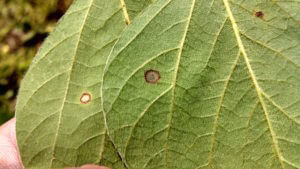Close up of Chemical Injury, Symptoms of chemical injury can look very much like those of certain diseases. Interveinal chlorosis and necrosis (yellowing and browning between leaf veins) from chemical injury can mimic sudden death syndrome (SDS) or stem canker. However, chemical injury symptoms do not persist and leaves that did not receive any of the chemical will not show any symptoms, nor will new upper leaves. Spotting on the lower leaves from herbicides look like septoria brown spot or frogeye leaf spot and can be hard to distinguish. Although, chemical burn will usually be close to a perfect circle and FLS may be more angular in shape. The under sides of the leaves are the best area to distinguish the two. Chemical burn will have a bleached out center (lesions on the right) whereas FLS will have a tan to grayish center and if the lesion is sporulating, in the very center of the lesion there will be a dark black area (lesions on the left). Symptoms may appear 2-3 weeks after spraying or 1 to 2 days. No yield decrease has been noted in research plots in the past.
New Growth Unaffected
Photo Credit: Anthony Ohmes – Univ. of MO



